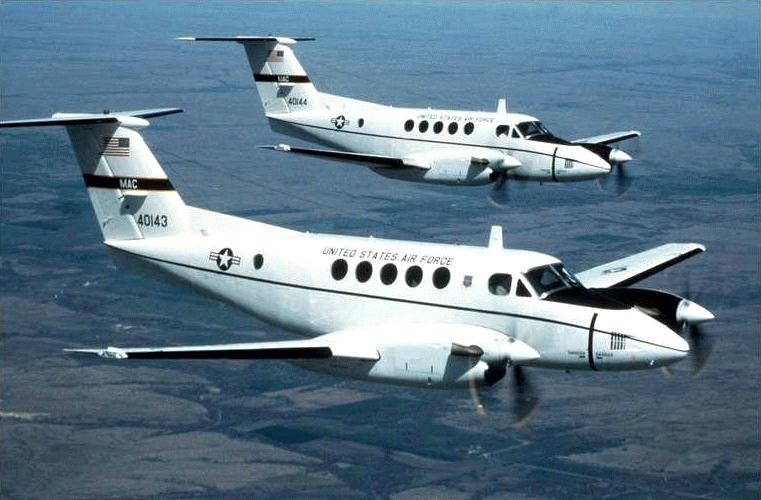Table of Contents
ToggleThe dynamics of military strength often bring to mind powerful fighter jets and imposing armored vehicles. Yet, a key player in the shadows, the C-12 Huron, significantly influences military logistics and strategies. For those eager to understand the unseen mechanisms that drive military endeavors and their strategic dimensions, check out this blog and keep reading to delve into the critical function of the C-12 Huron.
Overview of the C-12 Huron
The C-12 Huron, a military adaptation of the Beechcraft Super King Air, is a versatile twin-engine turboprop aircraft serving various roles within the United States military and other agencies. Celebrated for its swift transport of personnel and cargo, as well as its capabilities in medical evacuation and training, the C-12 has proven itself as an essential component of military logistics. This aircraft distinguishes itself through an efficient combination of speed, range and payload capacity, making it an invaluable tool for supporting military operations worldwide.
The versatility of the C-12 Huron extends beyond its primary roles, as it can be configured for a wide array of missions, including aerial survey, medical transport and even VIP transport. This adaptability makes it an essential tool in the military’s arsenal, capable of supporting a broad spectrum of operational requirements. The aircraft’s ability to operate from short, unprepared airstrips further enhances its tactical value, allowing it to reach remote locations and provide critical support in challenging environments.
Strategic Advantages of Enhanced Mobility
For military effectiveness, the C-12 Huron’s operational adaptability and quick response time are essential. Its rapid transport capabilities for essential personnel and supplies can drastically alter the outcome of military engagements. The C-12’s economic operation, when compared to larger transport aircraft, further emphasizes its strategic value in preserving operational efficacy and budget integrity. The persistent reliability of the C-12 in deploying swift and decisive responses underlines its strategic significance in military planning.
The strategic utility of the C-12 Huron is derived from its ability to act as a force multiplier in addition to its quickness in moving people and goods. By rapidly deploying key assets and expertise to critical locations, the C-12 enables military forces to respond effectively to evolving situations, maintain operational tempo and seize tactical advantages. This enhanced mobility is particularly crucial in dynamic, fast-paced operational environments where timely actions can significantly influence mission outcomes.
Technological Innovations
The C-12 Huron excels not only due to its operational capabilities but also through its integration of cutting-edge technology. Contemporary models of the C-12 boast advanced avionics that improve navigational precision and safety. Additionally, the aircraft’s versatility in accommodating specialized equipment positions it perfectly for surveillance, reconnaissance and communications roles. This flexibility ensures the C-12’s ongoing relevance and efficacy amidst rapid technological shifts and evolving military needs.
Addressing Operational Challenges
Although the C-12 Huron is a formidable asset, it faces its share of operational hurdles, including maintenance demands and the challenges of operating in diverse weather and geographical conditions. The military’s commitment to addressing these issues—through continual investment in upgrades and maintenance—highlights the C-12’s indispensability. These efforts are aimed at enhancing the aircraft’s readiness and extending its operational life, securing its place as a cornerstone of military mobility.
Impact on Government Procurement
The acquisition and utilization of the C-12 Huron shed light on the intricate aspects of government contracting and strategic military logistics planning. The nuanced process of procuring, upgrading and maintaining such specialized aircraft demands a delicate balance of cost-effectiveness, capability assessment and sustainability. For individuals involved in government contracting and strategic logistics, the C-12 presents a valuable case study in aligning military objectives with procurement policies, underlining the vital link between operational demands and strategic procurement decisions.
While the C-12 Huron may not claim the spotlight like other military assets, its role in bolstering mobility, rapid response capabilities and strategic operations is irrefutable. As military and governmental strategies advance, the C-12 continues to serve as a reliable and versatile asset, critical to the success and efficiency of military missions.




